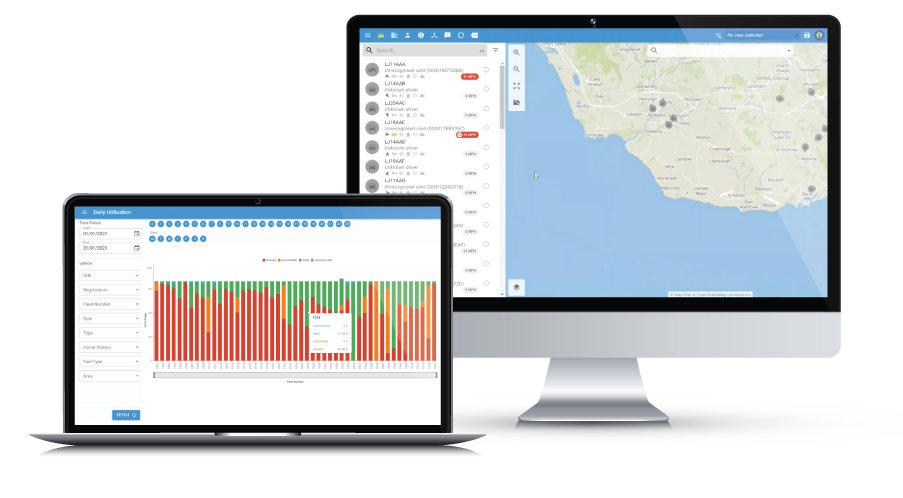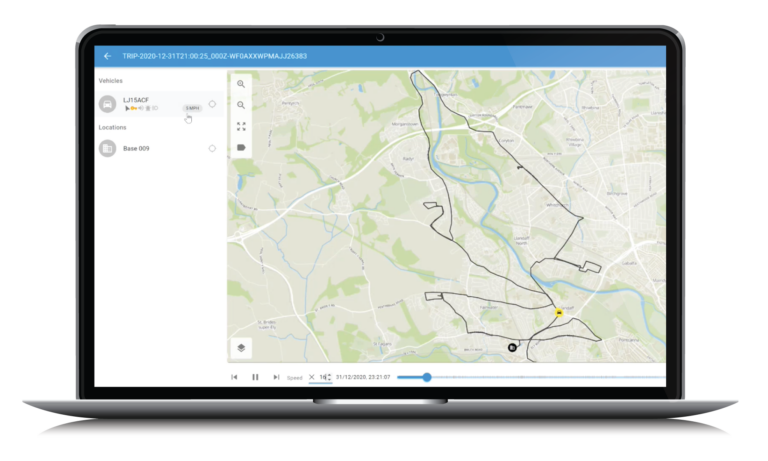Optimising Your Fleet Without Compromising Your Core Business Operations
29 September 2023
In the world of emergency services, the efficient operation of your fleet is not just a convenience; it’s a matter of life and death. Ensuring that you have the right number of vehicles in the right places at the right times is essential. That’s where the IR3 Fleet Availability feature comes into play. In this blog, we’ll introduce you to this powerful tool that can help you optimise your fleet without compromising your core business operations.
Understanding the IR3 Fleet Availability Feature
The IR3 Fleet Availability feature is a game-changer for emergency services fleets. It allows users to assess, by location and vehicle role, how many vehicles are truly needed. Here’s how it works:
- Location and Vehicle Role Analysis: With this feature, you can dive deep into your fleet’s operations. It breaks down your fleet by location and vehicle role, providing you with granular insights.
- Risk Factor Customisation: Not all locations or vehicle roles have the same demand. The IR3 Fleet Availability feature allows you to set a percentage risk factor. If certain vehicles are frequently needed, you can use a higher risk factor, ensuring that you don’t compromise your operations. Conversely, for lower-demand situations, you can use a lower risk factor.
- Surplus Vehicle Identification: By using this tool, you can identify surplus vehicles at specific locations. These surplus vehicles can then be reallocated to areas with higher fleet demand or even sold to release capital.
The Benefits of the IR3 Fleet Availability Feature

Now, let’s delve into the many benefits of incorporating the IR3 Fleet Availability feature into your fleet management strategy:
1. Granular Analysis
The ability to assess each location and vehicle role individually means you can make precise decisions about your fleet’s needs.
2. Risk Factor Customisation
You have the power to set the risk factor to ensure that your core business operations are never compromised due to a shortage of vehicles.
3. Efficient Allocation
Over-utilised business locations can easily receive additional vehicles without the need to purchase more, optimising your resources.
4. Identifying Underutilised Vehicles
Underutilised vehicles are easily identified, allowing you to either move them to higher-demand areas or sell them to release fundss

5. Periodic Analysis
Fleet optimisation isn’t a one-time endeavour. With this feature, you can run analyses for any time period, ensuring that you continuously identify and achieve potential savings.
6. Transition to Electric Vehicles (EVs)
For fleets looking to make the transition to electric vehicles, this tool can identify locations and roles that may be suitable for early adoption of EVs.
7. Customised Risk Factors
You can configure the analysis for any “confidence/risk factor,” allowing you to set a baseline “best case” and explore the potential for savings.
8. Synergy with IR3 Vehicle Utilisation
When combined with the IR3 Vehicle Utilisation feature, you can pinpoint underutilised vehicles and understand the extent of their underutilisation.
9. Significant Cost Savings
Some fleets have reported saving up to 20% of their capital costs by using the IR3 Fleet Availability feature. These savings can be reinvested in your core business operations or used for further fleet enhancements.
In conclusion, optimising your emergency services fleet is not just about having enough vehicles; it’s about having the right vehicles in the right places. The IR3 Fleet Availability feature empowers you to achieve this goal while ensuring that your core business operations remain uncompromised. By using this tool, you can enhance efficiency, reduce costs, and ultimately provide better service to the communities you serve. Don’t miss out on the opportunity to take your fleet management to the next level.
Want more information?
Get in touch today to optimise your fleet without compromising your core business operations
Contact Us